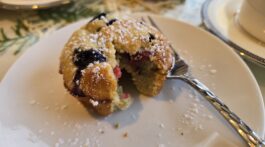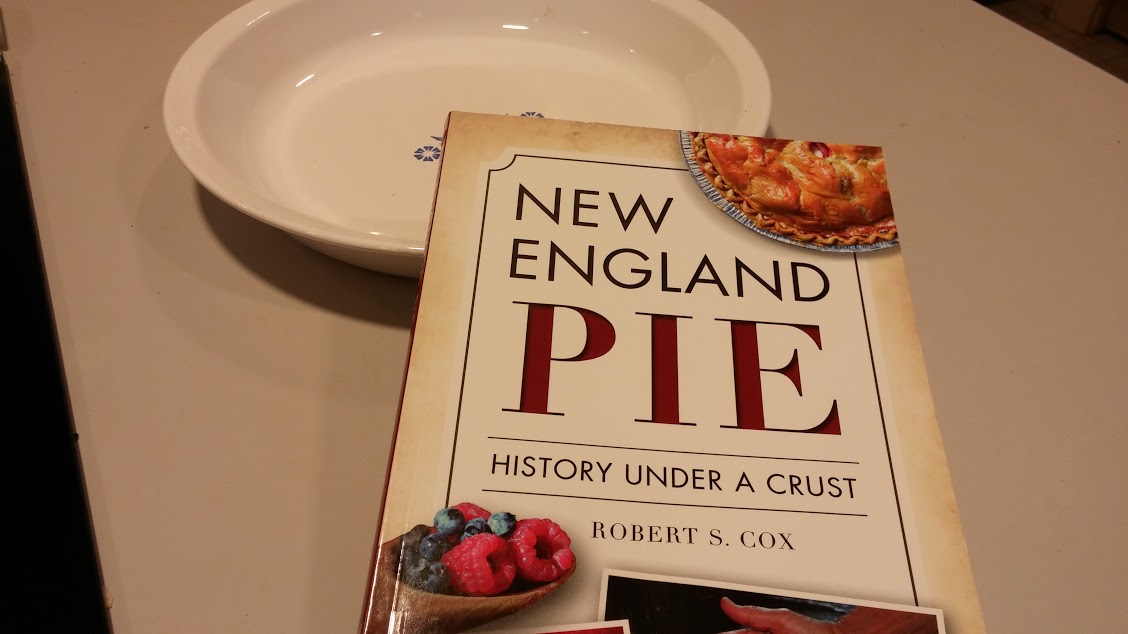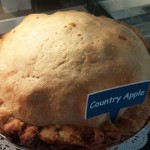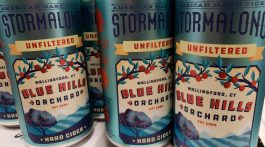As American as New England Apple Pie. That’s not how the saying goes, but Robert Cox makes a good case for the change. Cox thinks of pie as the foundation of New England cooking – both as a legacy of our English forefathers and as adapted and innovated by pioneers, settlers and inspired cooks.
In his book New England Pie, History Under a Crust, Cox takes us on an inviting twelve-month, beautifully-described journey through the history and importance of pie to New England. Cox has studied history, religion and science. He is a poet and has written on lots of topics including the Lewis and Clark expedition and New England culinary history. He’s also the head of special collections at UMass-Amherst. His diverse background and poetic skills are brought eloquently to bear on the subject of pie.
In the introduction he says, “New England’s Pies are … maps for understanding. Pie can be indulgent or frugal, a host for ephemeral fruits or a coffin for the leftovers of the long months of winter. They can be sweet or savory, delicate or robust, healthy or deadly.” He goes on, chapter by chapter, to describe fundamental New England pies, set their place in history, and show their cultural impact.
Around our house, one of the measures of a book’s success is how many times I bother my wife to read her an especially well-written, memorable, or interesting passage. I have to tell you she’s been a little annoyed because I have read her so many excerpts from New England Pie.
Cox’s pie year starts in January with the distinctive mashed potato and meat pie French Canadians brought to New England. February is a discourse on the poultry pies of early days that boiled down to the now-popular chicken pot pie. Along the way Cox discusses the early days of the frozen food industry and its innovator Clarence Birdseye.
Maple cream pie – called rare as a unicorn – is the March topic. After the first paragraph Cox wanders off for nine pages on an intelligent, informative and interesting digression on slavery, the triangle trade, and efforts by Benjamin Rush and Thomas Jefferson to promote maple sugar as an alternative to slave-trade cane sugar. Fascinating food history! Just before the chapter ends, he returns to maple pie, if only for a moment.
In April, rhubarb is “the surest sign of the (spring) season.” Care must be taken to remove the toxic leaves of this widely-grown plant. Originally from China and cultivated across Europe in Medieval times for its medicinal value, American cooks learned to “tame its tart tendencies” to create a pie filling that bubbles up from the crust like a “fearsome vision in mauve.”
Pies, of course, are defined by their crust, except when they’re not. Shepherd’s Pie, with its topping of mashed potatoes and no bottom crust, is May’s pie. In a world of pies with crusts, Cox says, “No matter how you slice it, shepherd’s pie is an awkward fit, a charlatan pastry, a forged check on the bank of pie.”
June brings up another crustless pie, in fact an iconic dessert that is a pie in name only: the Boston Cream Pie. At times, my youth seemed to be a journey from one slice of Boston cream pie to the next. Rich yellow cake, eggy custard filling and deep, dark, sugary chocolate icing – it touches on most of my important food groups. Pie or not, it’s a beloved New England tradition.
Fruit pies dominate the summer and fall chapters. July delivers cherries, “a helix of sweet and tart to the tongue,” along with the origins of Table Talk pies. Whortleberries and blueberries fill the crusts in August along with the hurtleberry, huckleberry, and bilberry – fruits of a bygone era.
Cranberries are out of fashion for fruit pie, but Cox gives a complete history in the September chapter along with some tidbits about mock pies. Each chapter concludes with recipes from historical sources. Cranberry recipes are sourced from: Hale, 1852; The Ladies of the Unitarian Church, Waterville, ME, 1898; Orange Universalist Church Cookbook, 1928; The Ladies First Baptist Church of Gloucester, 1899; and The State of Maine Cook Book, 1929.
At last, apple pie appears in October. Cox says, “(Apple) pie adapted well to the diversity of New England tastes, whether made with sweet apples or tart, offered cold for breakfast or served with a drizzle of maple syrup, a dollop of ice cream, or a slice of sharp cheese.”
The November harvest brings pumpkin pies, its many squash pie cousins, and a discussion of pie spicing. Canned pumpkin and evaporated milk made for a long pumpkin pie season, when other sweet pies were limited to just a few weeks when the fruit was ripe.
The year winds up in December with mince pie. Much honored in Christmas songs, poems, and lore, mince is an acquired taste now waning in popularity. None the less, it looms large in the food history of New England.
These days, Southern food is the trending American cuisine. It’s on the rise with young chefs across the south updating the classics, and traditionalists reviving old-time dishes with top quality ingredients. Coastal cuisine, lowcountry cooking, barbecue from across the region, New Orleans classics, and cotton belt favorites all are enjoying a renaissance. Books, magazines, TV chefs, and regional restaurants are all celebrating southern cooking.
New England has an equally rich culinary heritage with a long and fruitful coast, rich farmland, a large dairy industry, and waves of immigrants contributing their own flavors to our bounty. Mr. Cox might just be the pied piper to lead a resurgence of interest in our region’s cooking. With his deep historical knowledge, vivid language, and great storytelling skills, I found myself deliciously wrapped up in New England pie crust.
















No Comment